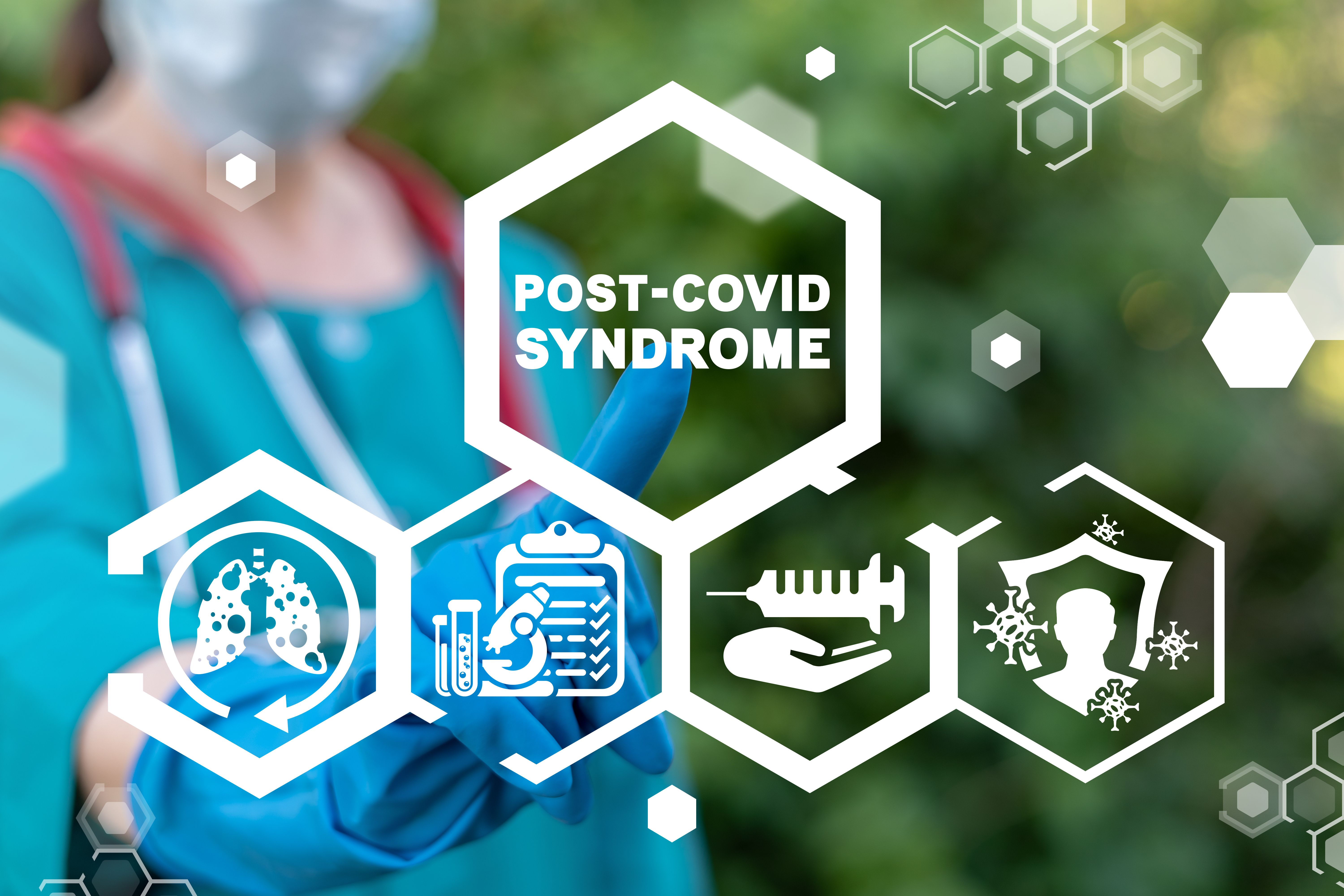- Center on Health Equity & Access
- Clinical
- Health Care Cost
- Health Care Delivery
- Insurance
- Policy
- Technology
- Value-Based Care
Long COVID Symptoms Improve With Cognitive Behavioral Therapy
Cognitive and behavioral techniques can improve physical function and overall well-being in patients with long COVID.
Cognitive and behavioral techniques can improve physical function and overall well-being in patients with long-COVID. | Image Credit: wladimir1804 - stock.adobe.com

Patients with post-COVID-19 condition (PCC) experienced effective and safe improvements in physical function during a brief outpatient rehabilitation program that applied cognitive and behavioral approaches, according to a study published in JAMA Network Open.1
Long COVID or PCC is the ongoing persistence of symptoms like fatigue, dyspnea, and cognitive dysfunction for 3 months or longer following an infection with SARS-CoV-2 combined with major functional impairments and no other condition that could explain the symptoms. Long COVID is a major burden for patients, caretakers, the health care system, and society.
Endothelial dysfunction, autoimmune reactions, persistent viral reservoirs or inflammation, and direct tissue damage are potential mechanisms of the pathophysiologic characteristics of long COVID. Psychosocial factors like loneliness, neuroticism, worrying tendencies, depression, anxiety, and psychological distress are linked with persistent PCC, symptoms, and disabilities.
About 8.4% of US adults have reported experiencing some form of PCC, with 3.6% currently affected and 2.3% experienced activity-limiting symptoms, according to the 2023 National Health Interview Survey.2 Data has found vaccinated individuals decrease their risk of both COVID-19 and PCC compared with unvaccinated individuals.3
Prior research methods have found cognitive behavioral therapy designed for long COVID and postinfective fatigue syndrome could result in fatigue improvement and functional capacity.1 Given the limited clinical evidence on long-COVID and fatigue, study authors sought to gather additional data to inform future clinical guidelines on a global scale.
A 2-arm, pragmatic randomized clinical trial was conducted based on assessments performed at enrollment, immediately after completion of intervention, and 12 months after enrollment. The program was a structured, 2-stage process that aimed to restore physical function, consisting of 2 to 8 outpatient encounters with about 2 to 6 weeks between each encounter.
There were 314 total patients with mild to moderate PCC included in the study with 43 years as the mean age (female, n = 225). Common symptoms included fatigue, cognitive difficulties, and postexertional malaise (PEM) that also correlated among each other as well as most other symptoms.
About 310 patients began treatment, with 154 patients in the intervention group and 156 patients in the care as usual (CAU) group. Only 253 patients completed treatment, and 227 patients completed the entirety of the follow-up period, leaving 35% of individuals with incomplete data. There were 2 out of the 9 participants who actively withdrew based on treatment. Around 158 protocol deviations were identified, the most common were loss to follow-up and primary end point missing.
Data collected between February 22, 2022 until April 15, 2024, included self-reported physical function on the SF-36-PFS at the primary outcome which improved more in the intervention group compared with the CAU group. At long-term analysis, the difference between the 2 groups was practically identical, indicating a sustained effect.
Secondary outcomes results were in favor of the intervention group. Physical problems like breathlessness and sleep problems were not significant at the primary endpoint but were significant at the secondary endpoint. Individuals in the intervention group (17%) and the CAU group (20%) met the recovery threshold at baseline.
Primary endpoint criteria were also met in 50% of individuals in the intervention group and 32% of those in the CAU group.
Adverse events (AEs) and serious adverse events (SAEs) were lower in the intervention group with a total of 4 SAEs recorded. None of the SAEs were considered related to the intervention except for 1 that may have been due to diagnostic delay. There were 9 individuals who were in the intervention group that had a decreased self-report of physical function from baseline to the primary outcome compared with 25 in the CAU group. Finally, 4 participants in the intervention program had an increase in PEM from baseline to the primary outcome compared with 31 in the CAU group.
This study had several limitations, including its single-center design and the lack of blinding due to the nature of the intervention. Participants were generally non-hospitalized with moderate impairment, potentially limiting the generalizability of findings to patients with more severe affects. Additionally, the broad and self-reported nature of the long COVID diagnosis and the absence of objective functional measures may have influenced the results.
“Future research should explore which elements of this approach are the most effective and identify subgroups for whom the current treatment is most relevant,” concluded study authors.
References
1. Nerli TF, Selvakumar J, Cvejic E, et al. Brief outpatient rehabilitation program for post-COVID-19 condition a randomized clinical trial. JAMA Netw Open. 2024;7(12):e2450744. doi:10.1001/jamanetworkopen.2024.50744
2. McCormick B. Many US adults affected by long COVID, related activity limitations. AJMC®. December 16, 2024. Accessed December 18, 2024. https://www.ajmc.com/view/many-us-adults-affected-by-long-covid-related-activity-limitations
3. Joszt L. Risk of long COVID has declined, largely due to vaccination. AJMC. July 17, 2024. Accessed December 18, 2024. https://www.ajmc.com/view/risk-of-long-covid-has-declined-largely-due-to-vaccination
Addressing the Demand for Mental Health Services During the COVID-19 Pandemic
May 25th 2021On this episode of Managed Care Cast, we speak with Gregory Harris, MD, MPH, DFAPA, senior medical director for behavioral health at Blue Cross Blue Shield of Massachusetts, about the challenges of meeting the demand for mental health service during the COVID-19 pandemic.
Listen
